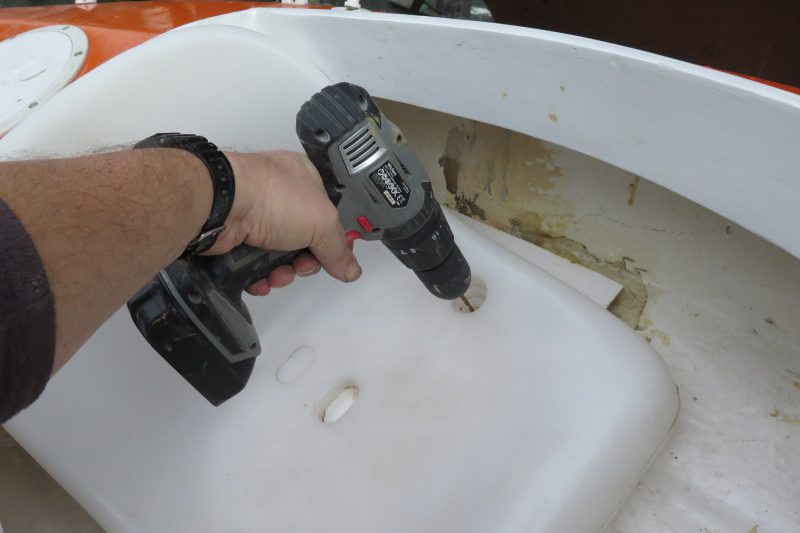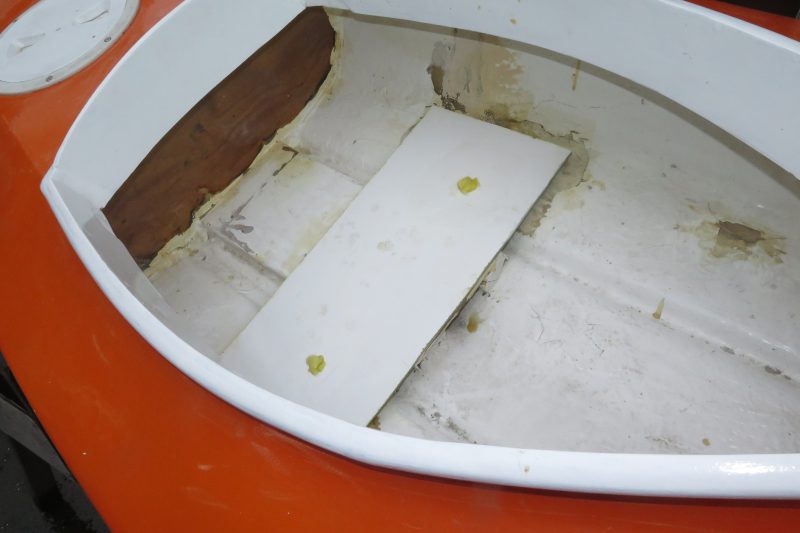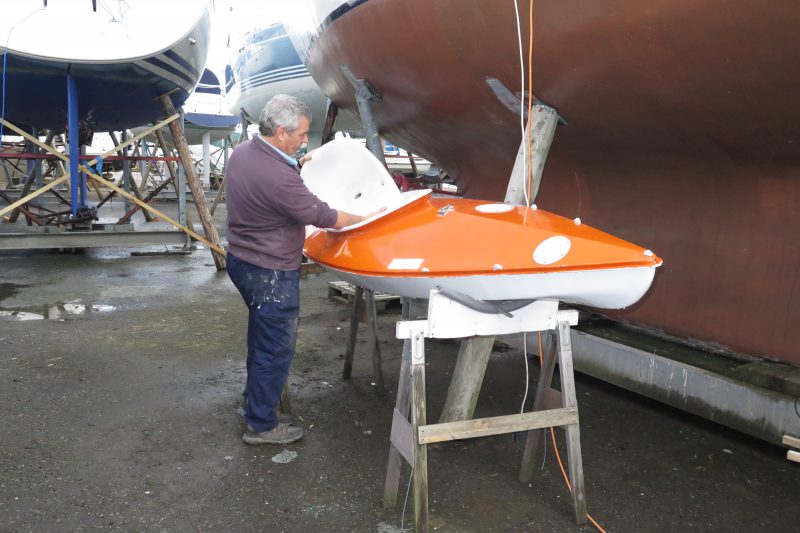Trade Secrets: The Great Sponge Trick

If you have to secure a screw or bolt into an area that is almost inaccessible from underneath, then this trick, using WEST SYSTEM® epoxy will prove a brilliant solution.
The beauty of epoxy is that it remains a liquid for a useful working period after it has been mixed. This means it can travel quite a long distance within your project before it cures. As such, mixed epoxy has been run down the metal bulkheads of old cars, where it follows the same line as a rainwater leak. As the epoxy finds the inaccessible holes responsible it cures while passing through and seals them up.
The same trick can be used to anchor bolts and screws into a project where there is no access from underneath, or where the fitting will be right up against the hull so there is almost no room for a nut or washer.

This canoe restoration had given some headaches. A rigid plastic seat was due to be attached to a GRP plate that runs across the hull but there was no way to access the plate from underneath. Without bolts the seat would simply twist around underway and fall out in a capsize. The answer was to use an old sponge, like the type used for washing cars, as it has an open-cell configuration that absorbs a lot of epoxy.

The seat was placed into position and pilot holes drilled through where the bolts (or screws on a smaller job) would go, taking care not to drill right through the hull underneath.

Oversized holes (that is, bigger than the intended bolts) were drilled into the plate to take the sponge. Ideally, they should be at least double the diameter of the screw or bolt.

Two pieces of sponge were cut off, ensuring they would be big enough to squash into the hole before spreading out underneath. The ideal shape for this type of plug is a cylinder, although a square will suffice.

The squares of sponge were given a test fit to ensure they were not too small. It is better to err on the side of being too big as the sponge is highly compressible.

20cc WEST SYSTEM 105 Epoxy Resin and 4cc of 205 Fast Hardener were measured by syringe and then mixed together (5:1 ratio). This proved just the right amount. (The Junior Pack is ideal for this kind of job and is a useful addition to any on-board tool kit).

Both pieces of sponge were saturated in epoxy in turn, making sure they had each sucked up about half the epoxy in the pot.

The sponge was then pushed into the hole with a twisting motion, some of the epoxy being forced out in the process.

Any escaping epoxy is scraped up using the chisel-edged WEST SYSTEM plastic mixing stick and tipped back into the exposed sponge.

The sponge is left to harden. The idea is that the foam has spread out under the plate and created a plug during the cure.

Once mostly cured (so still a little ‘green’) the foam can then be cut off with a sharp chisel. When fully cured, it’s ground flat with an angle grinder or sander. A hole can then be drilled into the hard foam to accept a screw.

For an even stronger fitting, you can drill an oversized hole in the sponge to accept a bolt with its nut and washer.

Coat the nut with a thin film of oil to act as a release agent. Spray-on vegetable or olive oil works well, or you can use any household lubricating oil. Use a toothbrush to get the release agent right into all the threads; the epoxy won’t stick to the oil coated surface but keep it off the nut itself – that needs to be bonded into the epoxy.
Mix WEST SYSTEM 105 Epoxy with 205 Hardener and 406 Silica Filler. Tip some of this into the hole, then stand the bolt upright and run the thickened epoxy around it. Wipe of any excess with a chisel edged scraper. Make sure the bolt won’t topple whilst the epoxy cures.
Once the epoxy has cured, the bolt can be removed at any time whilst the nut and washer stay locked in place.
The same trick was used to get to areas where there wasn’t enough clearance for a bolt underneath in these deck fittings. How strong the final bond is will depend on how much the sponge can spread out behind the deck and how tough the sponge itself it. This method isn’t recommended for heavy loads but is great for areas that take decorative or low-load fastenings.

